All About Open and Closed Syllables (3 Free Worksheets)
This post may contain affiliate links. As an Amazon affiliate, we earn from qualifying purchases. See our disclosure policy.
Let’s explore everything you need to know about open and closed syllables! Included are definitions, examples, how to teach them, and three free PDF worksheets designed to practice the skills needed to master open and closed syllables.
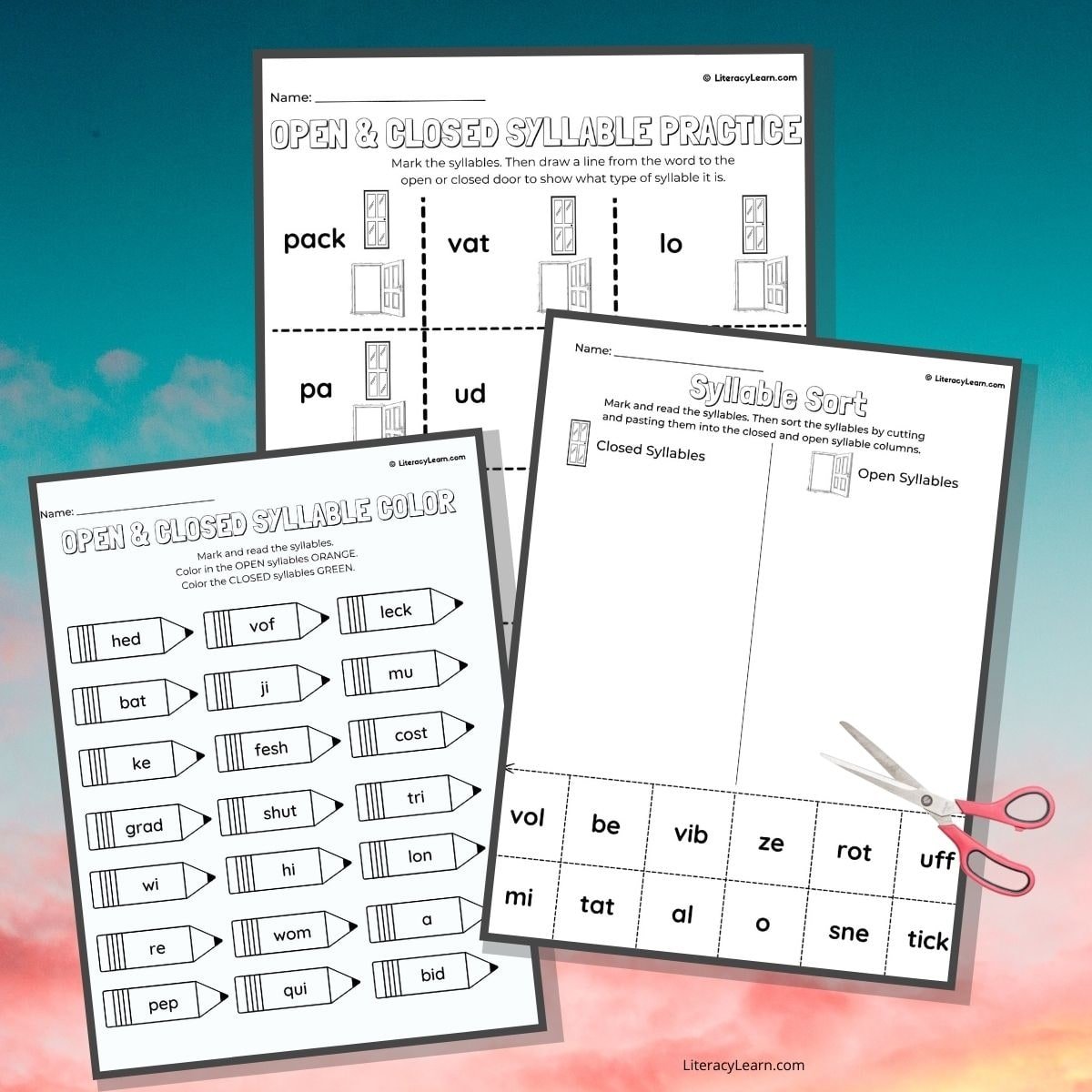
Definitions
Closed syllables have a vowel that is closed in by a consonant, making the vowel say its short sound. The word ‘cat‘ is an example of a closed syllable. For more examples, see our list of 80+ closed syllable words.
Open syllables end in a long vowel. The vowel will always say its name. The word ‘me‘ is an example open syllable.
Many multisyllabic words include both open and closed syllables. Some examples are recap, solo, iris, music, and event.
Broken down it looks like this:
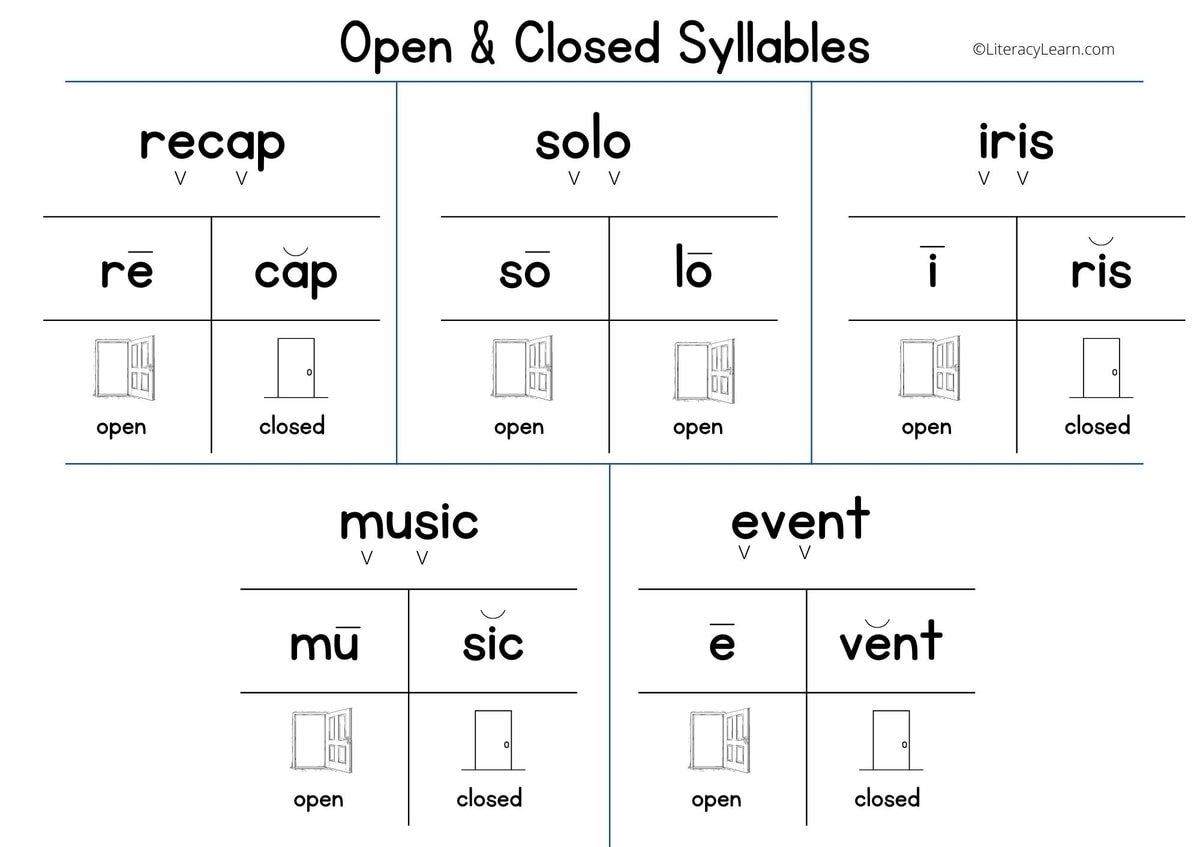
Teaching open and closed syllables together or one directly after the next makes sense. These are the two most basic syllable types in English words. Kids need to know both of these syllable types in order to read longer, multisyllabic words.
How to Teach Open & Closed Syllables
Background Knowledge – It is important kids learn the definitions of concepts and terms like vowel, consonant, short vowel, long vowel, and syllable.
Repeated Exposure – Children need lots of practice working with closed and open syllables and be able to differentiate and flex between the two types. Our free PDF worksheets are great for this! Get our free Open & Closed Syllable Door Puzzle for more practice!
Closed Syllables – Use CVC words to teach closed syllables. Kids are usually very familiar with CVC words and already understand that CVC words have short vowels. Now, just teach them the term ‘closed syllable’ since there is only one vowel and the consonant closes in the vowel.
Open Syllables – Use one-syllable words ending in a long vowel sound to teach this. Words like me, by, we, she, and hi are great examples. They follow the CV pattern, ending in a long vowel. Teach them the term ‘open syllable’ since the vowel does not have a consonant closing it in.
🖍 Marking Syllables
There are a lot of steps to think through when identifying and reading syllables, so it’s important to teach kids a procedure for marking syllables.
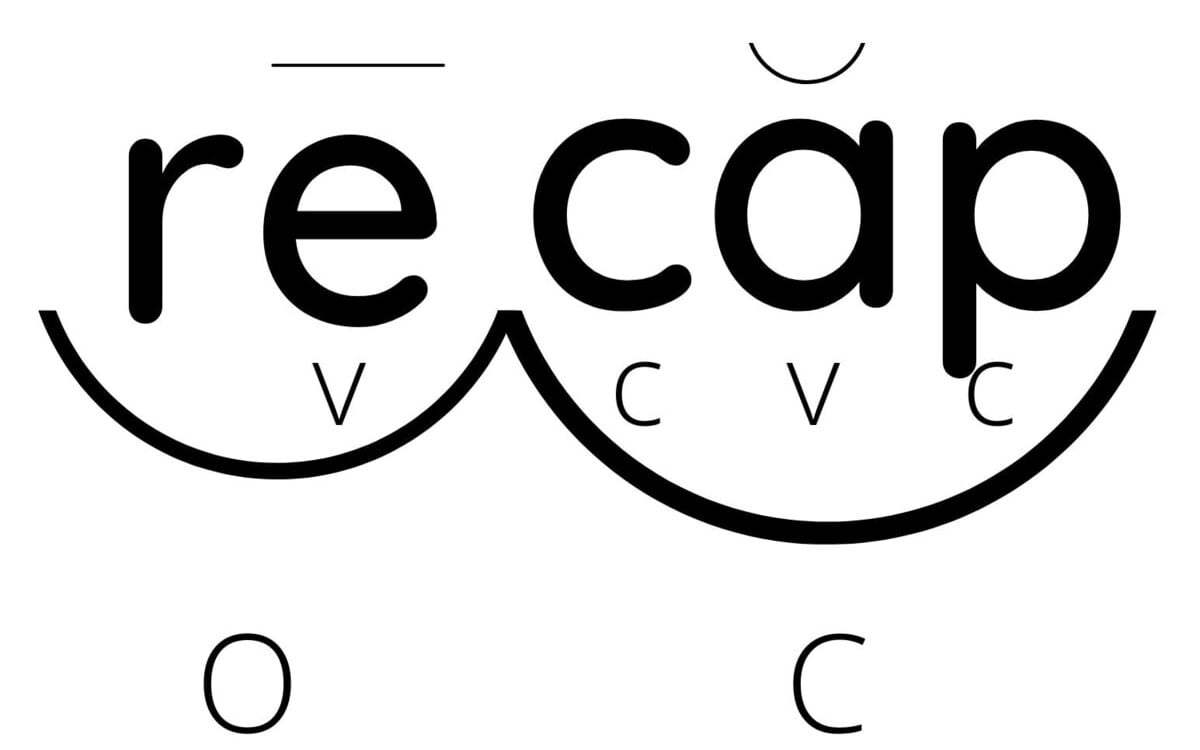
Here’s how I teach my students:
- Find the vowels. Underneath each vowel, write “V.”
- Find the consonants. Undernearth each consonsant, write “C.”
- Swoop the syllable.
- Under the swoop, mark the syllable with a “C” if closed or “O” if open.
- Go to the top of the word and mark the vowel with the long (macron) or short symbol (breve).
- Use finger tapping to say each sound, and then blend the sounds together to read the syllable.
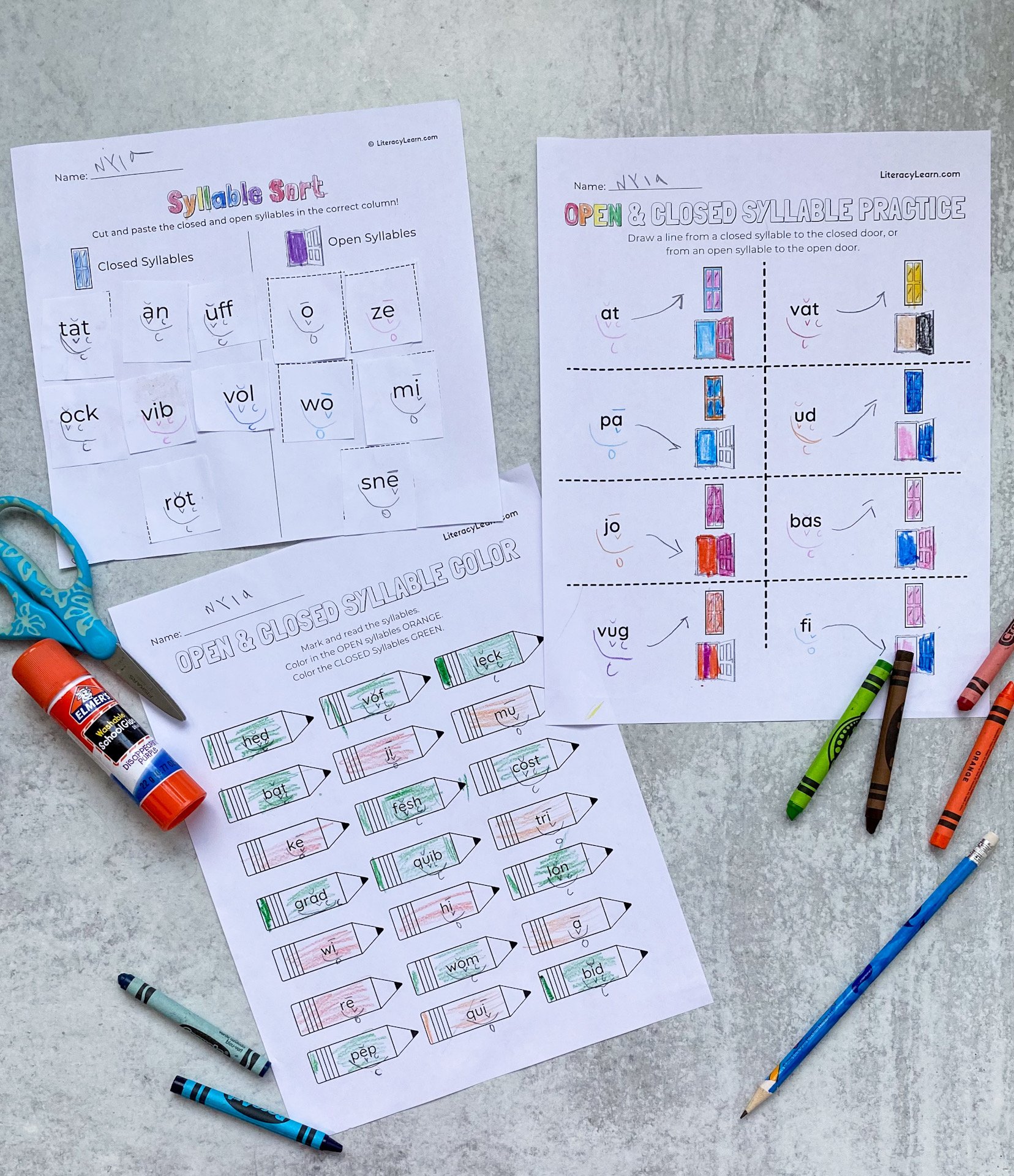
📝 Practice with Activities & Printables
Kids will need lots of practice with open and closed syllables, and these three worksheets are perfect for that!
We use mostly nonsense syllables (so kids can’t rely on words or word parts they already know.) If children can read nonsense syllables correctly, then you’ll know they firmly understand the concepts.
For all of these worksheets, make sure kids are marking the syllables before completing the activity. Then ask them to read the syllables aloud, making sure they read them with the correct vowel sound.
- Syllable Sort
Cut out the syllables and sort them under the open or closed door. - Syllable Practice
Draw a line to the correct door. If it’s an open syllable, draw the line to the open door. If a closed syllable, draw a line to the closed door. - Syllable Coloring
Each syllable is written inside a pencil. Kids color the open syllables orange and the closed syllables green.
👉 Tip: To go deeper with any of these worksheets, have your students identify the nonsense syllables vs. real words!
Educational Focus: These resources are perfect for 1st & 2nd grade students. But use them with any children beginning to learn syllable types and syllable division, no matter what age!
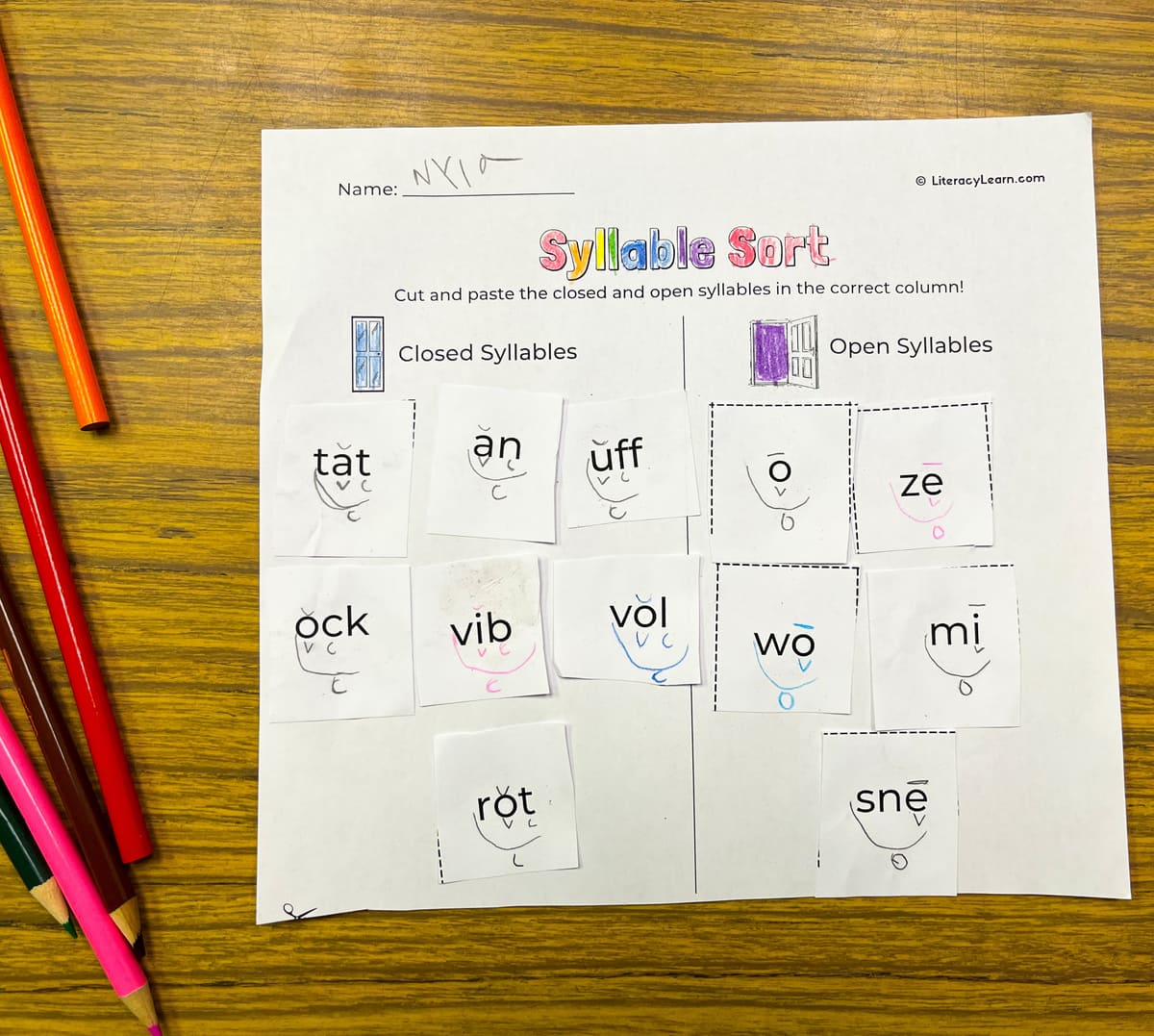
Related Posts
Learn more about syllables or explore these posts:
- Everything you need to know about the 6 Syllable Types
- Closed Syllables Worksheets
- SH Printable Worksheets
- Silent E Worksheets
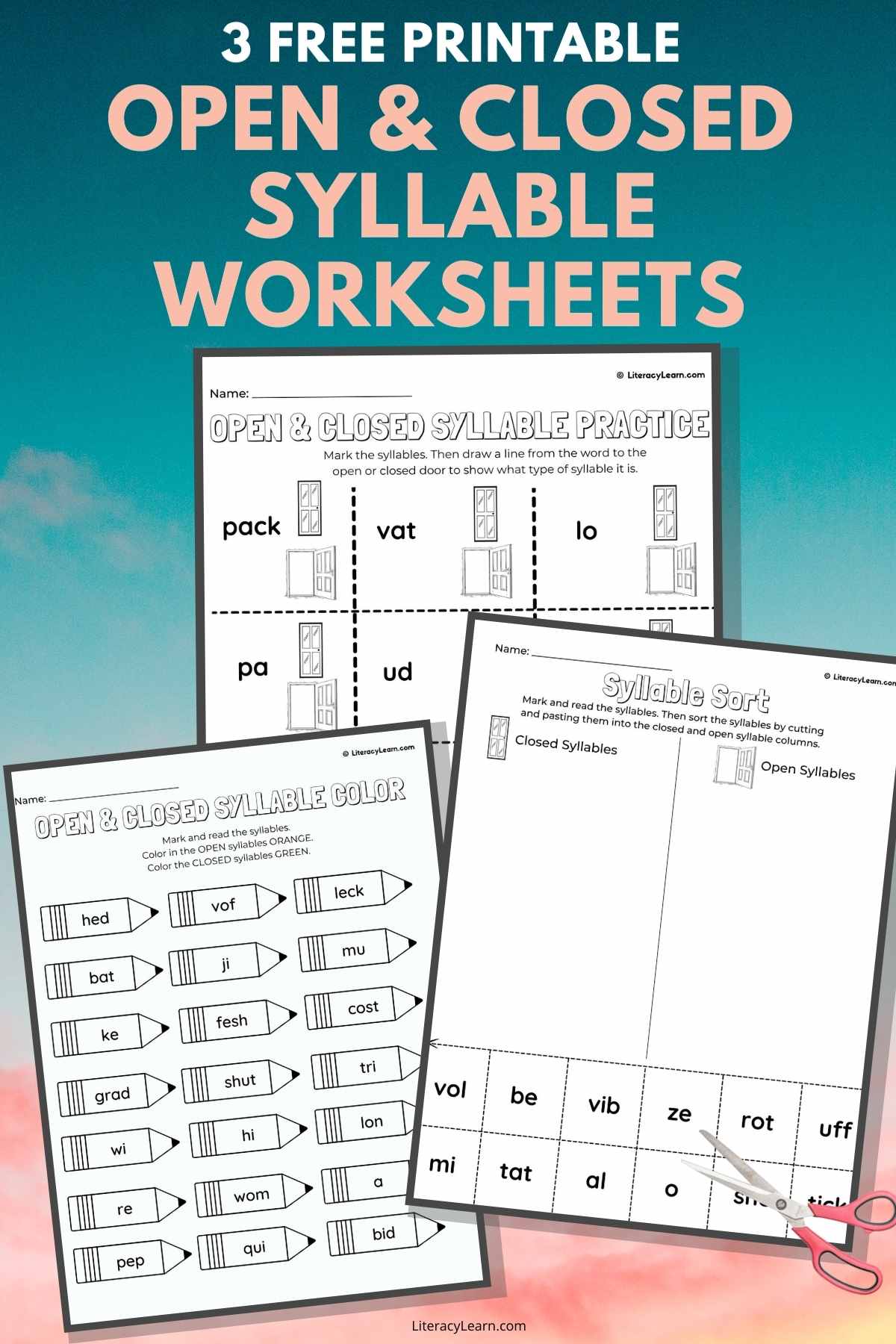
Download & Print
Are you using these worksheets? We’d love to hear about your experience using them! Please leave a comment below or tag us on Instagram @literacylearn.
DOWNLOAD TERMS: All of our resources and printables are designed for personal use only in homes and classrooms. Each teacher must download his or her own copy. Please do not save to a shared drive, reproduce our resources on the web, or make photocopies for anyone besides your own students. To share with others, please use the social share links provided or distribute the link to the blog post so others can download their own copies. Your support in this allows us to keep making free resources for everyone! Please see our Creative Credits page for information about the licensed clipart we use. If you have any questions or concerns regarding our terms, please email us. Thank you!

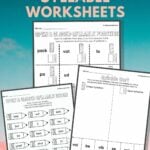

What if the student divides this way to decode:
Rec-ap
How do they know where to divide the vowels in an Unfamiliar word ?
Hi Anne! Students need to locate the vowels, then notice the consonant in between. This can either be a V/CV (ti/ger) word or a VC/V (cam/el) word. About 75% of words will follow the V/CV pattern, so try that first (like re/cap). If it doesn’t make a real word, then try the other way. Kids need to distinguish between which syllable pattern/rule makes an actual real word. Click here for more about syllable division rules. You can also check out our syllable division worksheets in TPT for this. Let us know if you have any more questions!
Katie & Laura
Keep on working, great job!
Thank you! We will definitely keep working!